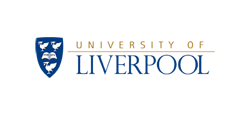
| Nuclear Physics Group |
Physics Department
Conferences
Seminars
Useful Links
IT Resources
Feedback:
support@ns.ph.liv.ac.uk
The Ultra Data Acquisition system uses software components developed for Eurogam/Euroball updated to run on modern hardware. These software components include spectrum and register servers executing in VME. The MIDAS graphical user interface is used for control and analysis. The hardware components are based around the FERA readout standard.
Ultra hardware
The data acquisition hardware consists of the following components in a VME crate ...
Additional crates may also be configured, each one requiring ...
C1000 VME modules
The system supports the following locally designed boards ...
The board will interface to most NIM ADCS, and contains onboard memory for singles histogramming. The board will run in singles and coincidence mode simultaneously with a common deadtime.
The system requires one of these board be present to control the FERA readout chain. The board has the same functionality as the LeCroy 4301 together with an event separator word and variable readout and reset delays.
This board consists of a timer/counter module and 4 x 64bit scalers. The timer/counter module is used to count upto 64 sequential time periods as defined by the user. The scalers count for each of the time periods and store the resultant values in memory. The board can be connected to C1008 boards to allow singles spectrum routing into upto 64 segments of the onboard memory.
Allows relative event timing to be recorded to 32bit accuracy. Time periods can be set to 100nanoseconds, 1microsecond, 10microseconds or 100microseconds. The value can be readout as part of a coincidence event.
This board has four 4k ADCs onboard, each connected to 4k channels of 32bit memory for singles histogramming. The board will run in singles and coincidence mode simultaneously with a common deadtime.
Supported CAMAC modules
Most CAMAC FERA ADC/TDC modules have been used with the system, including LeCroy 4300/4303, Silena 4418, Ganelec QDC1612 and Ortec 413.The MIDAS graphical interface software also supports setup of the following CAMAC modules ...
LeCroy 2277, 2551, 4208, 4413, 4415A, 4434, 4504, 4516, 4518, 4532
Other modules not listed are easily included.
Ultra software
The workstation software currently runs under Solaris and Linux (except the sort spy).The MIDAS graphical user interface is used, which enables all the applications used in Eurogam/Euroball to be accessed. The graphical interface is used for all aspects of setup, control monitoring and data analysis.
The locally written MTsort sorting package is also available for data monitoring (and , if necessary data output to tape).
The software within the VME crate has been written under the LynxOS real-time kernel to perform all the necessary operations of hardware setup, acquisition control, event checking and readout.
Both the Eurogam/Euroball register server and the spectrum server have been ported to Lynxos.
The event processing code formats the input FERA format data stream into Eurogam format events. The exact event format can be configured in the MIDAS graphical interface.
Further information
Please contact jrc@ns.ph.liv.ac.ukLast modified: 18 December 1997 Maintained by John Cresswell, jrc@ns.ph.liv.ac.uk
| © University of Liverpool | Disclaimer. | |